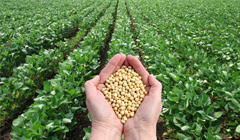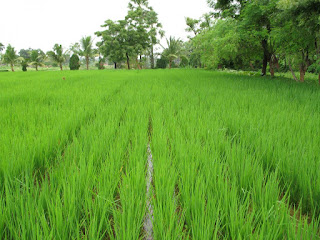How crop insurance Works
Two styles of
crop insurance square measure out there to farmers within the United States:
Crop-Hail and Multiple Peril Crop Insurance (MPCI).
Crop-Hail
Crop-Hail
policies don't seem to be a part of the Federal Crop Insurance Program and
square measure provided on to farmers by non-public insurers. several farmers
purchase Crop-Hail coverage as a result of hail has the distinctive ability to
whole destroy a big a part of a planted field whereas departure the remainder
undamaged . In areas of the country wherever hail could be a frequent event,
farmers typically purchase a Crop-Hail policy to safeguard high-yielding crops.
not like MPCI, a Crop-Hail policy will be purchased at any time throughout the
season.
Multiple Peril
Crop Insurance (MPCI)
MPCI policies
should be purchased before planting and canopy loss of crop yields from every
kind of natural causes together with drought, excessive wet, freeze, and
malady. Newer coverage choices mix yield protection and value protection to
protect farmers against potential loss in revenue, whether or not as a result
of low yields or changes in market value.
Under the
Federal crop insurance program's distinctive public-private partnership, there
square measure presently sixteen non-public firms approved by the u. s. Department of Agriculture Risk Management
Agency (USDA RMA) to jot down MPCI policies. The service delivery aspect of the
program - writing and reinsuring the policies, marketing, adjusting and process
claims, coaching and record-keeping, etc. - is handled by every non-public
company. The program is overseen and controlled by the chance Management Agency
(RMA). The RMA sets the rates which will be charged and determines that crops
will be insured in numerous elements of the country. The non-public firms
square measure obliged to sell insurance {to each|to each} eligible farmer
World Health Organization requests it and should retain some of the chance on
every policy.
The federal
additionally subsidizes the farmer-paid premiums to scale back the price to
farmers. The federal additionally provides compensation to the non-public
insurance firms to offset operational and body prices that may rather be paid
by farmers as a part of their premium. Through this Federal support, crop
insurance remains reasonable to a majority of America's farmers and ranchers.
By combining the
administrative unit and resource of the federal with the efficiencies of the
non-public sector, the crop insurance program has succeeded in meeting and even
surpassing the goals set forth by Congress for broad participation, diversity
and inclusion. By mistreatment the non-public sector, risk is shared among the
non-public firms in addition because the government.
Why it's
Essential
Crop insurance
helps build America's farmers and ranchers world leaders in agriculture,
permitting producers to remain competitive and be additional innovative. It
additionally helps them sleep higher at nighttime knowing that ought to the
surprising happen, they'll have the money security to remain in business and
proceed to plant future season.
More than ever
before, our farmers square measure being asked to provide additional product
and accomplish higher yields. Agricultural crops for food, feed, fiber and fuel
square measure in nice demand each domestically and abroad. New technology,
innovation, access to capital and reasonable risk management has enabled
America's farmers to satisfy the stress placed upon them. A spirited Federal
crop insurance program could be a key part to the tremendous success of our
country's agricultural economy.
Crop insurance
has been referred to as the linchpin of the Federal safety internet for
America's farmers and ranchers. additionally to reducing risk and protective
their investments, crop insurance permits farmers to borrow cash to expand and
improve their businesses by providing lenders the peace of mind that farmers
can have sufficient economic security to
repay their loans. Crop insurance additionally provides the safety that allows
farmers to futures market their crops to require advantage of market
opportunities.
There square
measure several different parts of the Federal safety internet for America's
farmers like direct payments, disaster help and programs designed to support
specific crops and special initiatives. however none has the universal
significance of the Federal crop insurance program. The overwhelming majority
of today's farmers trust Federal crop insurance as a result of they acknowledge
the worth it provides.
Crop insurance
has become an important business tool for America's agricultural producers.
operating in associate degree trade wherever one ruinous year may wipe out 5
years of profit, most farmers would not think about operational while not some
variety of crop insurance.























